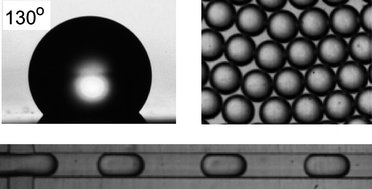Hydrophobic modification of polycarbonate for reproducible and stable formation of biocompatible microparticles
Abstract
We propose a simple and effective scheme for the modification of the walls of microfluidic channels fabricated in polycarbonate (PC) after the device has been bonded. The method prevents both static and dynamic wetting of PC by aqueous solutions including viscous, non-Newtonian solutions of


 Please wait while we load your content...
Please wait while we load your content...